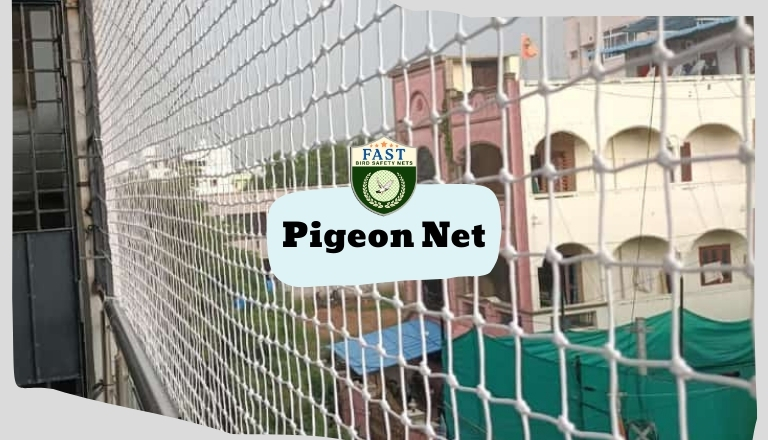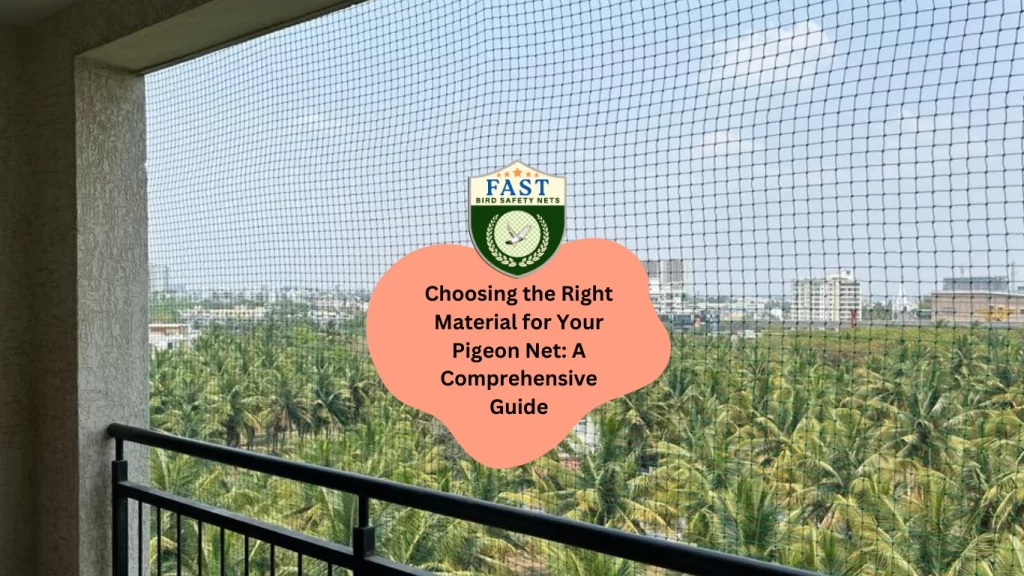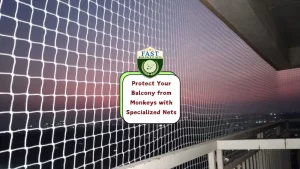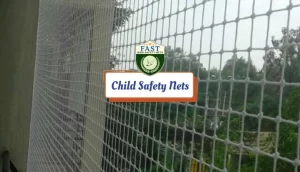Pigeon control is a crucial aspect of urban living, especially for those residing in apartments or buildings with balconies. Pigeon nets are an effective solution to keep these birds away, preventing them from roosting and nesting in unwanted areas. However, selecting the right material for your pigeon net is essential to ensure its durability, effectiveness, and suitability for your specific needs. In this comprehensive guide, we’ll explore various materials used in pigeon nets, their pros and cons, and factors to consider when choosing the right material for your pigeon net.
1. Nylon Netting
Nylon netting is one of the most common materials used for pigeon nets. It is lightweight, durable, and resistant to UV rays and harsh weather conditions. Nylon nets are available in different mesh sizes and thicknesses, allowing you to choose the right option based on the level of protection required.
Pros:
- Lightweight and easy to install.
- Durable and long-lasting.
- Resistant to UV rays and weather damage.
- Available in various mesh sizes to suit different needs.
- Cost-effective option.
Cons:
- May deteriorate over time if exposed to extreme sunlight.
- Requires proper installation to prevent gaps or tears.
- Not suitable for areas with heavy bird activity.

2. Polyethylene (PE) Netting
Polyethylene netting is another popular choice for pigeon nets. It is made from high-density polyethylene, which provides excellent strength and durability. PE netting is resistant to chemicals, abrasion, and moisture, making it suitable for outdoor use.
Pros:
- High strength and durability.
- Chemical and abrasion-resistant.
- UV stabilized for long-term outdoor use.
- Available in various colors and mesh sizes.
- Easy to clean and maintain.
Cons:
- Slightly heavier than nylon netting.
- May be more expensive than other options.
- Requires proper installation to ensure effectiveness.
3. Stainless Steel Netting
Stainless steel netting is the most durable option for pigeon control. It is made from corrosion-resistant stainless steel wires, providing superior strength and longevity. Stainless steel nets are often used in areas with heavy bird activity or where other materials may not withstand harsh conditions.
Cons:
- Higher initial cost compared to other materials.
- Requires professional installation due to its rigidity.
- May not be suitable for all budgets or applications.
Factors to Consider When Choosing a Pigeon Net Material:
- Location: Consider the environment where the pigeon net will be installed, including exposure to sunlight, wind, and moisture. Choose a material that can withstand these conditions effectively.
- Budget: Determine your budget for pigeon control and select a material that offers the best balance of cost and quality. While stainless steel nets may have a higher upfront cost, they can be a cost-effective long-term solution.
- Level of Protection: Assess the level of bird activity in your area and the specific areas you want to protect. Choose a netting material with the appropriate mesh size and strength to deter pigeons effectively.
- Installation Requirements: Consider the ease of installation and whether you require professional assistance. Some materials, such as stainless steel netting, may require specialized installation techniques.
- Aesthetic Appeal: Depending on the location of the pigeon net, you may want to consider its aesthetic appearance. Polyethylene nets are available in various colors, allowing you to choose an option that blends seamlessly with your surroundings.
Conclusion:
Selecting the right net is crucial to its effectiveness and longevity. Whether you opt for lightweight nylon netting, durable polyethylene netting, or robust stainless steel netting, consider factors such as location, budget, level of protection, installation requirements, and aesthetic appeal. By choosing the right material for your pigeon net and ensuring proper installation, you can effectively control pigeons and protect your property from damage and nuisance.






